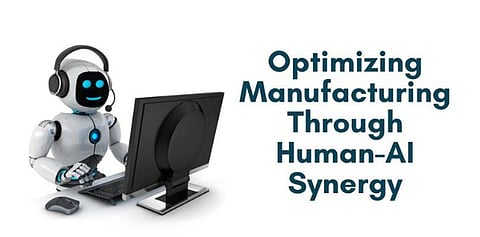

In this modern era, Manufacturing has entered a new era where machine learning (ML) and human expertise combine to create a more efficient, responsive, and intelligent production environment. In his article, Mohit Agarwal explores how the integration of these technologies is revolutionizing real-time manufacturing optimization, driving improvements in productivity, quality control, and resource efficiency.
Manufacturing processes are witnessing transformation through a dual strategy of ML plus human expertise. Current trends in the market show an increase in the adoption of smart manufacturing technologies, owing to the growing complexity of global supply chains and the imperative need for predictive maintenance. This very union of technology will significantly improve operational performance. Facilities that use ML-powered human-AI systems for decision-making get a marked increase in production efficiency, with a reduction in quality defects and better resource utilization.
Internally, smart factories remain a primary instance of this innovation. The connected sensor networks generate information that is continuously processed through real-time analytics. Human operators feed contextual judgment and expertise to ML-driven data systems, ensuring accuracy and quick decision-making.
The backbone of modern manufacturing is its real-time data processing capabilities, powered by advanced sensor networks. These networks collect thousands of data points every second from various components of the production line. Sensors capture temperature, vibration, and pressure data with remarkable precision, enabling the detection of even the most minute deviations. These innovations have helped improve overall equipment effectiveness (OEE) and reduced the need for reactive maintenance by enabling predictive analytics.
The integration of sensor networks with ML algorithms has led to improvements such as early fault detection, reducing unplanned downtime significantly. These advancements have allowed manufacturing facilities to improve operational metrics and reduce maintenance costs.
Predictive maintenance has emerged as one of the most impactful applications of ML in manufacturing. By processing large volumes of operational data in real-time, predictive systems forecast equipment failures with exceptional accuracy. This enables facilities to perform maintenance before equipment breaks down, minimizing downtime and extending asset life.
Some facilities now reduce maintenance costs by 30% and decrease downtime by 45%. This is a direct result of implementing predictive systems that not only anticipate failures but also optimize maintenance task scheduling. As the precision of predictive models increases, the ability to forecast issues 48 hours or more in advance has improved.
The integration of AI systems alongside human operators has reshaped decision-making in manufacturing. While AI handles data analysis and optimization tasks, human workers provide intuition, experience, and problem-solving capabilities. This collaboration has led to faster decision-making, improved accuracy, and a reduction in quality deviations.
A study across multiple facilities showed that human-AI collaborative systems enhanced operator decision-making speed by 34% and improved problem-solving accuracy by 41%. This synergy is especially important in situations where AI systems alone might struggle to interpret nuanced or unprecedented production anomalies.
Effective human-AI collaboration depends heavily on the design of the interface through which operators interact with AI systems. Research into human-centered design principles for AI interfaces has shown that well-designed systems significantly enhance user efficiency and minimize cognitive load. Operators using advanced interfaces that incorporate real-time feedback and predictive analytics can process complex production data much faster.
These interfaces help operators gain a clearer understanding of complex data streams, making it easier to take appropriate action swiftly. Facilities employing these advanced interfaces report reductions in human error-related downtime and improvements in preventive maintenance efficiency.
The future will see more and more deep integration of AI and human expertise in manufacturing. Further developing collaborative frameworks, predictive models, and more sophisticated interfaces will increase the performance of production environments. As machine learning algorithms become sophisticated, they will be able to predict, optimize, and make adjustments in real time, which will help manufacturers stay ahead of the competition.
As smart factories develop, the human-worker-human AI partnership will evolve into a very sophisticated form, in which they will complement each other's strengths. The focus will neither be on replacing workers with machines nor on melding maniacles with human insight and AI computing power.
In fact, human-machine convergence in manufacturing epitomizes the revolution in industrial optimization. In this regard, he cautioned that Mohit Agarwal states that successful integration requires both technical infrastructures and human considerations with such modern technologies. Enterprises whose policy adopt this model of co-existence will ultimately find success in the future of production, making operations safer and more efficient.
